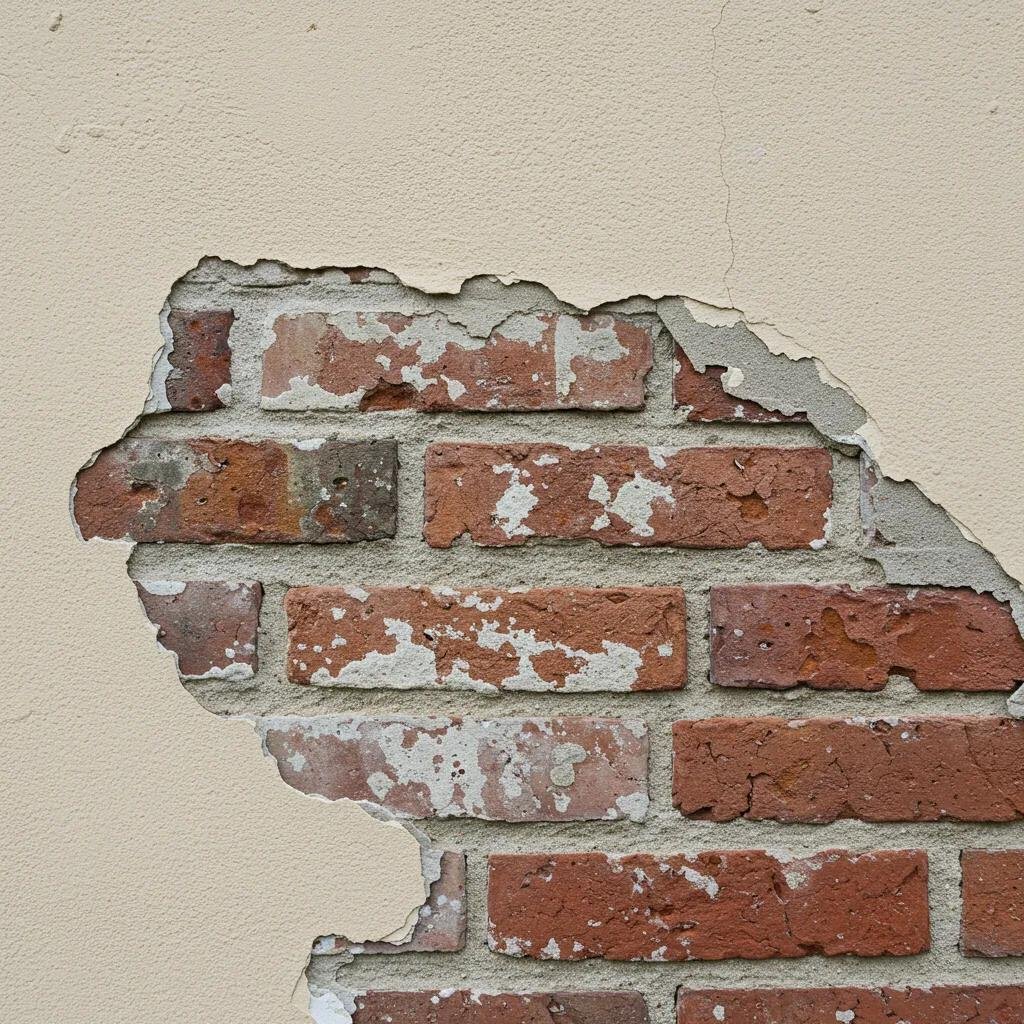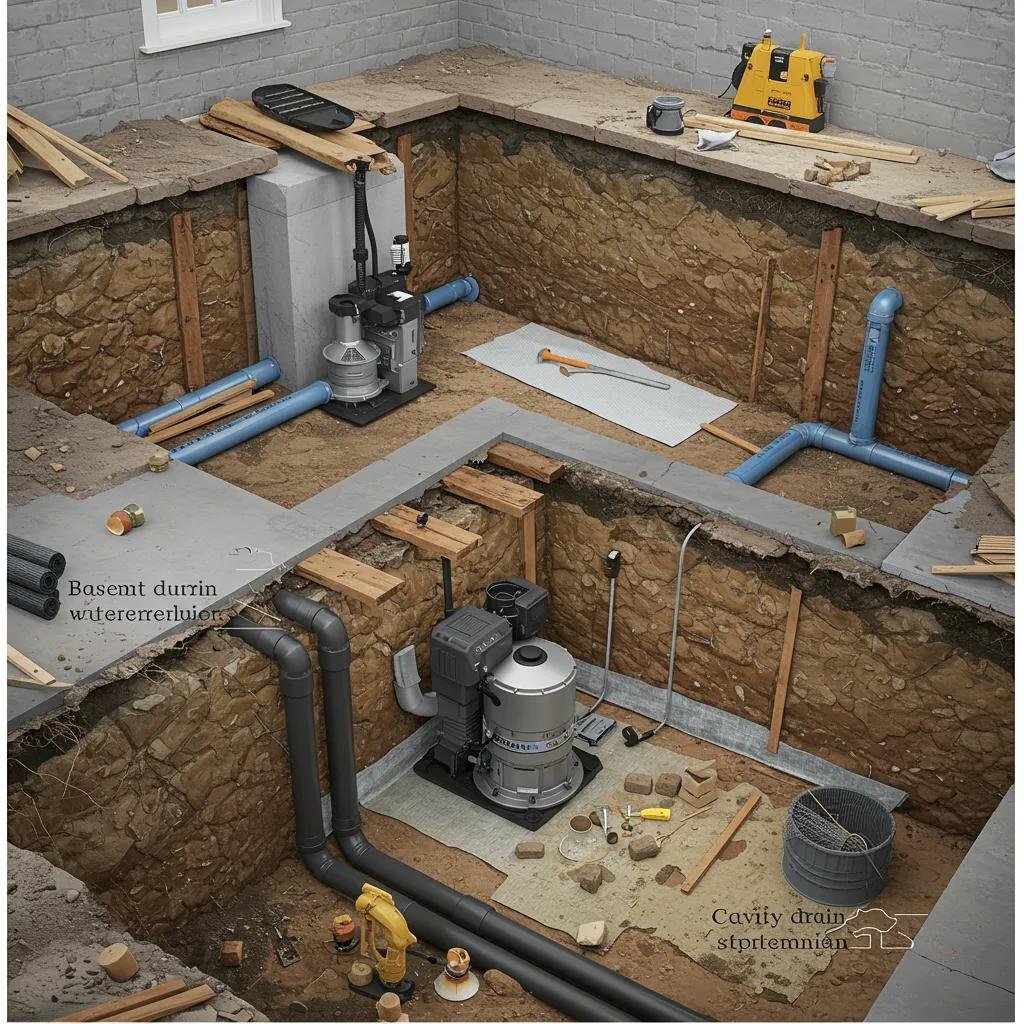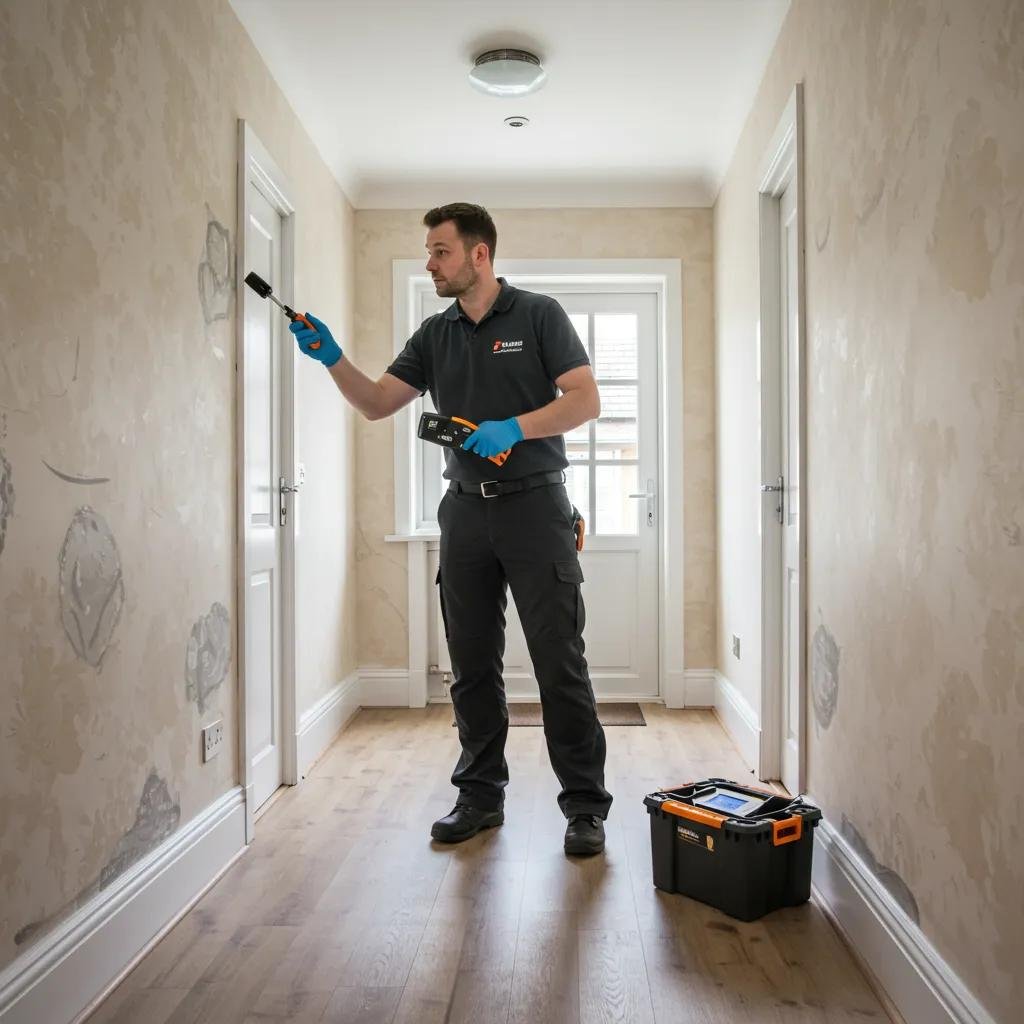Expert Damp Proofing Solutions for Elmbridge & Surrey: Treatments, Costs, and Prevention
Discover how damp can harm your Elmbridge or Surrey property’s structure, comfort, and value. Learn effective ways to tackle moisture problems with our expert help. Damp proofing involves specific treatments like chemical damp proof courses, waterproof membranes, and advanced ventilation, alongside preventative care. We cover rising damp, penetrating damp, condensation, basement damp, timber decay, and more. This guide explains:
- What rising damp is, how to fix it, and how to stop it coming back
- How to find and fix penetrating damp
- Controlling condensation, getting rid of mould, and improving air quality
- Essential basement waterproofing methods and what they cost
- Why a professional damp survey is crucial, what it involves, and the price
- Treating timber decay like wet rot, dry rot, and woodworm
- Best ways to maintain your property and when to call the experts
Elmbridge Damp Proofing are accredited specialists offering guaranteed, custom solutions. Get clear advice on moisture control, treatment costs, and protecting your property.
Understanding and Treating Rising Damp Effectively
Rising damp is when ground moisture travels up through porous walls via capillary action. This often happens if the damp proof course (DPC) is missing or damaged. You’ll see tide marks, crumbling plaster, and salt deposits on walls. A common solution is injecting a silane-based cream to create a new barrier, stopping moisture and restoring dry interiors.
Efficiency assessment of horizontal damp proof courses made by chemical injection in wall tests
This study investigated the effectiveness of a chemical damp-proof cream, primarily composed of silanes and siloxanes, in preventing rising damp in mortar specimens. The research demonstrated that the chemical cream significantly influences the hydrophobicity and microstructure of the material, effectively disrupting capillary rise.
This information directly supports the article’s explanation of chemical DPC injection using silane-based creams to establish a new barrier against moisture migration.
What Causes Rising Damp in Elmbridge Homes?
Rising damp occurs when high ground levels or blocked air bricks push moisture into walls. Capillary pores then draw this water up past the DPC. Common causes include:
- A faulty or absent DPC in older properties
- External soil levels built up against the wall base
- Salt contamination that weakens plaster
Moisture build-up leads to salt crystallisation, which damages render and plaster, and ruins interior finishes.
Spotting the Signs of Rising Damp

Look out for these signs before treating:
- Tide marks about 1 metre above the floor
- Peeling paint and bubbling plaster
- A musty smell in downstairs rooms
- Damp skirting boards and discoloured brickwork
Catching these early can save you from extensive replastering and reduce repair costs.
Effective Treatments for Rising Damp
Here’s a look at the leading repair methods:
Combining chemical injection with salt-resistant replastering ensures both a dry structure and a good-looking finish.
Rising Damp Treatment Costs in Surrey
Costs vary depending on the property and how bad the damp is. Chemical injection typically costs £80–£150 per linear metre, with replastering adding £25–£35 per m². Factors influencing cost include:
- Wall thickness and height needing treatment
- How much damaged plaster needs removing and replacing
- Ease of access for drilling
- The type of protective render or finish chosen
Accurate budgeting helps avoid unexpected expenses and ensures complete coverage.
Preventing Rising Damp Long-Term
Effective prevention involves regular checks and managing your environment:
- Keep air bricks clear and ensure no obstructions around the wall base.
- Make sure external ground levels are below the DPC to prevent splashback.
- Install proper drainage to move rainwater away from the property.
- Arrange annual inspections by qualified damp specialists.
Consistent maintenance keeps treatments working and protects your interior finishes from future moisture problems.
Identifying and Fixing Penetrating Damp
Penetrating damp happens when rainwater gets through your building‘s exterior, causing damp patches or leaks anywhere on the wall.
Causes of Penetrating Damp in Buildings
- Leaking gutters, downpipes, or hopper heads
- Cracks in external render, pointing, or masonry
- Porous brickwork that absorbs driving rain
- Roof issues like damaged flashing, soffits, or leadwork
These breaches allow moisture into the walls, causing damp spots on interior surfaces.
Distinguishing Penetrating Damp from Other Damp Types
- Rising damp appears near the skirting boards with tide marks.
- Condensation forms in corners, on windows, and cold surfaces.
- Penetrating damp appears suddenly during or after heavy rain.
Correct diagnosis ensures you use the right solutions and avoid wasted effort.
Best Solutions for Penetrating Damp
Effective solutions fix external defects and waterproof the building:
- External waterproof coatings stop rain from entering render or brickwork.
- Repointing and crack repair seals gaps in mortar joints and stonework.
- Cavity wall insulation removal/upgrade if it’s trapping moisture.
- Gutter and downpipe maintenance ensures water flows away properly.
Combining repointing with a breathable water-repellent coating restores the wall‘s protection while allowing it to breathe.
Protecting Your Home from Rain Penetration
- Clean gutters and downpipes at least twice a year.
- Check render, pointing, and flashing for any cracks.
- Apply silicone-based water repellents to porous masonry.
- Ensure your roof drains well and flat areas have the correct fall.
Regular upkeep prevents costly interior damage and makes your home more resistant to weather.
Condensation, Mould Growth: Causes and Controls
Condensation forms when warm, moist air hits cold surfaces, creating water droplets that encourage mould.
Why Condensation Happens in Homes
- High humidity from everyday activities like cooking, showering, or drying clothes indoors.
- Lack of ventilation in bathrooms, kitchens, and bedrooms.
- Cold spots on surfaces like single-glazed windows or uninsulated walls.
Excess moisture in the air condenses on cooler surfaces, leading to damp patches and stains.
Effective Ways to Control Condensation
- Install mechanical ventilation systems (MVHR) to refresh stale air.
- Use dehumidifiers to keep indoor humidity below 60%.
- Improve insulation in walls, lofts, and around windows to eliminate cold spots.
- Fit positive input ventilation (PIV) units to gently push fresh air into living spaces.
Good ventilation and consistent warmth reduce moisture levels and prevent condensation.
Health Risks of Mould and How to Remove It
Mould releases spores that can cause respiratory problems and allergies. To remove mould:
- Treat surfaces with a biocide wash or specialist anti-mould cleaner.
- Clean thoroughly with detergent and water, ensuring all mould traces are gone.
- Address the underlying moisture source to stop it returning.
- Call professional mould removal services for toxic black mould or widespread issues.
Health inequalities: Cold or damp homes
This briefing highlights that condensation and dampness in homes can lead to mould growth, with inhaling mould spores causing allergic reactions, worsening asthma, respiratory infections, and other symptoms. It also notes a significant impact on mental health, with increased depression and anxiety in individuals living in cold or damp conditions.
This information directly supports the article’s claims regarding the health risks associated with mould growth, including respiratory issues and allergies.
Improving Indoor Air Quality to Prevent Damp
- Use extractor fans in steamy areas and ensure vents are clear.
- Allow air to circulate by keeping vents open and furniture away from walls.
- Introduce houseplants that help absorb humidity, like peace lilies.
- Use a hygrometer to monitor humidity levels and know when to use a dehumidifier.
Good airflow and humidity control keep your home fresh and dry.
Why Basement Waterproofing is Crucial and Available Methods
A damp basement can damage foundations, ruin stored items, and make the space unusable due to water ingress and pressure.
Common Basement Damp Issues in Elmbridge
- Slow seepage through cracks in concrete or brickwork.
- Hydrostatic pressure pushing moisture through joints and walls.
- Rising groundwater levels, especially after heavy rain.
- Poor internal drainage causing puddles and damp floors.
Untreated moisture can weaken the structure and lead to mildew growth.
Reliable Basement Waterproofing Methods

Here’s a comparison of the main basement solutions:
Combining a cavity drain membrane with a sump pump provides complete moisture control for a permanently dry basement.
Benefits of a Dry Basement
- More usable living or storage space without planning issues
- Increased property value from extra functional space
- Eliminates mould, musty smells, and health risks
- Better thermal efficiency by insulating basement walls
A dry basement adds value and utility to your home.
Basement Waterproofing Costs
Costs vary by method and severity. Internal tanking is typically £150–£250 per m², while full external membrane installation can be £300–£450 per m². Factors include:
- Access and depth of excavation needed
- Structural repairs for cracks and joints
- The type of drainage and sump pump system chosen
- Specialist labour and warranty options
Accurate quotes prevent budget overruns and ensure effective protection.
The Importance of a Professional Damp Survey
A damp survey accurately identifies moisture issues, guiding the right treatments and preventing incorrect repairs.
What Happens During a Professional Damp Survey?
A qualified surveyor will:
- Visually inspect walls, floors, lofts, and the exterior of the building.
- Take moisture readings using meters.
- Use thermal imaging to find hidden moisture.
- Provide a detailed report with causes, affected areas, and recommended solutions.
Damp Survey Costs in Elmbridge and Surrey
Professional surveys usually cost between £250 and £400, depending on:
- The size of the property and how many rooms are checked
- The extent of testing (e.g., thermal imaging, lab analysis)
- The surveyor’s qualifications and accreditations
- Whether you need a same-day report or follow-up advice
An expert survey minimises the risk of damp returning and saves you money on ineffective treatments.
When to Book a Damp Survey
Book a survey if you notice:
- Persistent musty smells or visible water stains
- Decoration failing repeatedly in the same spot
- Different moisture readings on various walls
- Before buying a property to uncover hidden problems
Getting a timely diagnosis stops small damp issues from becoming expensive structural damage.
Treating Timber Decay: Wet Rot, Dry Rot, and Woodworm
Timber decay and insect infestations can weaken joists, floorboards, and structural timbers if not dealt with.
Identifying Wet Rot and Dry Rot
Look for these signs:
- Wet Rot: Wood feels soft and spongy, looks dark brown, and smells damp.
- Dry Rot: You might see rust-coloured fungal growth, a distinct smell, and ‘mushroom’ like bodies on the timber.
Spotting these early prevents further structural damage.
Effective Treatments for Timber Decay
Professional treatment involves:
- Chemical preservatives injected or applied to kill the fungus.
- Replacing badly damaged timbers with treated, pressure-impregnated wood.
- Improving ventilation and humidity control to prevent regrowth.
- Installing physical barriers to keep timber away from moisture.
These steps restore the timber’s strength and extend its lifespan.
Detecting and Eradicating Woodworm
To tackle wood-boring beetles:
- Look for small exit holes (around 1–2 mm) and fine powdery dust (frass).
- Use professional insecticidal treatments to reach and kill larvae.
- Replace or reinforce any timber that is badly weakened.
- Control moisture and improve ventilation to prevent reinfestation.
5 common causes of timber decay
This article details the conditions and characteristics of common timber decay types. It explains that dry rot (Serpula lacrymans) thrives with timber moisture content above 20% and high humidity, while wet rot (Coniophora puteana) requires persistently damp conditions with around 50-60% moisture content. It also describes woodworm (Anobium punctatum) preferring damp areas and leaving 1-2mm boreholes.
This source provides specific details on the identification and conditions for wet rot, dry rot, and woodworm, aligning with the article’s descriptions of timber decay.
Best Practices for Preventing Damp and Protecting Your Property
Regular maintenance and good building practices keep your property dry and reduce the need for costly repairs.
Maintaining Ventilation and Insulation
- Keep extractor fans running when cooking or showering.
- Ventilate wardrobes and underfloor spaces to avoid trapped moisture.
- Upgrade insulation in walls, lofts, and floors to prevent cold spots.
- Use humidity monitors to adjust heating and dehumidifier settings.
Regular Maintenance to Avoid Damp
A simple maintenance routine includes:
- Cleaning gutters and checking downpipes every three months.
- Repointing any damaged mortar joints as needed.
- Ensuring external ground levels are below the DPC.
- Checking roof flashing, chimneys, and external render annually.
When to Call for Professional Damp Proofing
Contact damp proofing experts if you notice:
- Damp patches that keep coming back despite your efforts.
- Rising damp affecting multiple walls or rooms.
- Penetrating damp after heavy rain.
- Condensation leading to persistent mould growth.
Keeping your Elmbridge or Surrey property dry, healthy, and structurally sound relies on early detection, expert help, and consistent upkeep.

